Amage: Sarmatian Warrior Queen/Regent Who Impressed With Remarkable Military Skills
A. Sutherland - AncientPages.com - Multiple burials of possible women warriors have been unearthed in sites associated with the Scythians, Sauromatians (a tribe nation ruled by women), and Sarmatians.
These ancient cultures from the late seventh through the second centuries BC had many female warriors.
 Among many women who lived in this part of the world, and roamed wild Scythian steppes, was Amage, a Sarmatian warrior queen who lived at the end of the 2nd century BC.
Among many women who lived in this part of the world, and roamed wild Scythian steppes, was Amage, a Sarmatian warrior queen who lived at the end of the 2nd century BC.
Many excavated Sarmatian military burials include the remains of armed Sarmatian women. The remains reveal clear signs of severe battle injuries, including stabs to their skulls and blows, similar to those observed on the remains of male warriors.
These findings, along with spears, axes, lances, and even double-edged short-swords (akinakes), found in the graves, strongly suggest that they all died in battle. The Sarmatian women, as were their husbands, brothers, and other relatives, were brave and skilled.
Among many women who lived in this part of the world, and roamed wild Scythian steppes, was Amage, a Sarmatian warrior queen who lived at the end of the 2nd century BC. She was the wife and co-ruler of the Sarmatian king Medosacus. Otherwise, very little is known about this Sarmatian queen and her rule. However, Sarmatian women became famous for having a prominent role in wars.
According to Hippocrates (c. 460 – c. 370 BC), Sarmatian women participated in warfare, and Herodotus (c. 484 – c. 425 BC), a Greek historian, described them as fighting in the same clothing as men. Some believe that the deeds of Amage's and other Sarmatian female warriors inspired those who created the Greek myths of the Amazons.
According to one source, her husband was a notorious drunkard who abused his power as a monarch for personal luxury. At the same time, another version points to the king's mental incompetence.
Amage Made An Important Decision In Difficult Times
From now on, the brave queen-warrior acted as regent; she took over the government into her own hands.
Polyaenus, a 2nd-century AD Macedonian author, writes in "Stratagems:
"She judged causes, stationed garrisons, repulsed the invasions of enemies, and directed everything with such a great ability that her fame extended through all Scythia."
She Was A Successful Ruler
Amage was impressed with the extraordinary military achievements - in the era of big but sluggish armies which depended more on size than strategy and tactics.
Instead, she organized a rally reminiscent of the actions of modern commandos. Her fame as a successful leader reached neighboring tribes and even far beyond the borders of her territories.
The inhabitants of the Chersonesus (once an ancient Greek colony founded about 2,500 years ago in the southwestern part of the Crimean Peninsula) also learned about her achievements. A king of the neighboring Scythians had systematically harassed these people. At last, they requested an alliance with her.
Polyaenus narrates that "in consequence of a treaty formed between the two nations, she wrote to the Scythian prince, requesting him not to repeat his ravages in the Chersonesus. When he treated her prohibition with disrespect, she marched against him with a hundred and twenty men of tried courage, and extraordinary strength, each of them provided with three horses."
In one night and day, she covered about two hundred kilometers (versions vary) and reached the enemy's palace.
In an unexpected attack, her troops captured the prince's palace, slew the guards, his friends, and his family, and ultimately killed the ruler.
Then "she put the inhabitants of Chersonesus back in free possession of their country, and gave his hereditary dominions to the son of the Scythian prince."
She allowed his son to live on the condition that he obeys her. She also warned him to be careful and take "a warning from his father's death, and not to invade the territories of the neighboring Greeks and barbarians."
Written by - A. Sutherland - AncientPages.com Senior Staff Writer
Updated on May 20, 2023
Copyright © AncientPages.com All rights reserved. This material may not be published, broadcast, rewritten or redistributed in whole or part without the express written permission of AncientPages.com
Expand for referencesMore From Ancient Pages
-
 Has A 12,000-Year-Old Underwater City Been Discovered Off The Coast Of Louisiana?
Archaeology | Mar 9, 2022
Has A 12,000-Year-Old Underwater City Been Discovered Off The Coast Of Louisiana?
Archaeology | Mar 9, 2022 -
 Underwater Stone Age Village Habonim North Found Off Israel’s Carmel Coast Thrived During Climate Change
Archaeology | Aug 1, 2024
Underwater Stone Age Village Habonim North Found Off Israel’s Carmel Coast Thrived During Climate Change
Archaeology | Aug 1, 2024 -
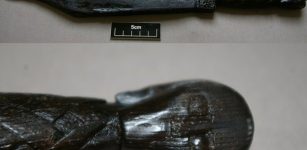 Extraordinary 1,000-Year-Old Viking Sword Discovered In Cork, Ireland
Archaeology | Sep 29, 2017
Extraordinary 1,000-Year-Old Viking Sword Discovered In Cork, Ireland
Archaeology | Sep 29, 2017 -
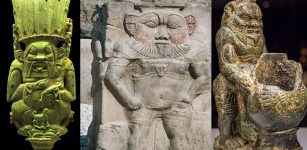 Bes – Ancient Egyptian Dwarf God Of Childbirth, Humor, Song and Dance
Egyptian Mythology | Sep 9, 2016
Bes – Ancient Egyptian Dwarf God Of Childbirth, Humor, Song and Dance
Egyptian Mythology | Sep 9, 2016 -
 On This Day In History: Rosa Parks’ Act Of Defiance And The Montgomery Bus Boycott – On Dec 1, 1955
News | Dec 1, 2016
On This Day In History: Rosa Parks’ Act Of Defiance And The Montgomery Bus Boycott – On Dec 1, 1955
News | Dec 1, 2016 -
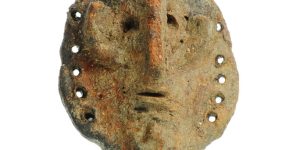 Unique Ancient Figurine Puzzles Scientists – Was She An Unknown Pre-Historic Water Goddess?
Archaeology | Jul 21, 2022
Unique Ancient Figurine Puzzles Scientists – Was She An Unknown Pre-Historic Water Goddess?
Archaeology | Jul 21, 2022 -
 Meskiaggasher: Legendary Founder Of The First Dynasty Of Uruk Who ‘Entered The Sea And Disappeared’
Featured Stories | Apr 20, 2021
Meskiaggasher: Legendary Founder Of The First Dynasty Of Uruk Who ‘Entered The Sea And Disappeared’
Featured Stories | Apr 20, 2021 -
 On This Day In History: ‘Battle On The Ice’ – Army Of Prince Nevsky Against Teutonic Knights Was Fought – On Apr 5, 1242
News | Apr 5, 2016
On This Day In History: ‘Battle On The Ice’ – Army Of Prince Nevsky Against Teutonic Knights Was Fought – On Apr 5, 1242
News | Apr 5, 2016 -
 7,000-Year-Old Unique Artifacts Discovered Under Melting Ice In Canada
Archaeology | Nov 30, 2023
7,000-Year-Old Unique Artifacts Discovered Under Melting Ice In Canada
Archaeology | Nov 30, 2023 -
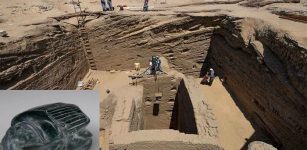 Unique Tomb Of Egyptian Commander Discovered In Abusir Sheds Light On ‘Globalisation’ In Ancient World
Archaeology | Jul 20, 2022
Unique Tomb Of Egyptian Commander Discovered In Abusir Sheds Light On ‘Globalisation’ In Ancient World
Archaeology | Jul 20, 2022 -
 Missing Piece Of A Linguistic Puzzle: Ancient DNA Identifies The Originators Of Indo-European Languages Spoken By 40% Of The World
DNA | Feb 12, 2025
Missing Piece Of A Linguistic Puzzle: Ancient DNA Identifies The Originators Of Indo-European Languages Spoken By 40% Of The World
DNA | Feb 12, 2025 -
 Unique Life-Sized Camel Carvings In Northern Arabia Are Much Older Than Previously Thought
Archaeology | Sep 15, 2021
Unique Life-Sized Camel Carvings In Northern Arabia Are Much Older Than Previously Thought
Archaeology | Sep 15, 2021 -
 Evolution Might Stop Humans From Solving Climate Change – Researchers Say
Evolution | Jan 3, 2024
Evolution Might Stop Humans From Solving Climate Change – Researchers Say
Evolution | Jan 3, 2024 -
 Ancient Graffiti On Sacred Mountain Reveals Secrets Of North Korea
Archaeology | Dec 3, 2021
Ancient Graffiti On Sacred Mountain Reveals Secrets Of North Korea
Archaeology | Dec 3, 2021 -
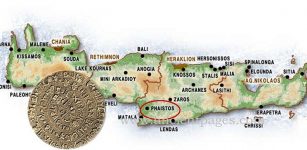 Is The Mystery Of Controversial Phaistos Disk Solved?
Archaeology | Dec 17, 2015
Is The Mystery Of Controversial Phaistos Disk Solved?
Archaeology | Dec 17, 2015 -
 Eccentric Holy Roman Emperor Rudolf II Whose Occult Interest And Mistakes Led To The Thirty Years’ War
Featured Stories | Apr 8, 2025
Eccentric Holy Roman Emperor Rudolf II Whose Occult Interest And Mistakes Led To The Thirty Years’ War
Featured Stories | Apr 8, 2025 -
 Mysterious Kaali Crater And The Holy Lake – Sacred Ancient Places In Estonia
Featured Stories | Jan 19, 2018
Mysterious Kaali Crater And The Holy Lake – Sacred Ancient Places In Estonia
Featured Stories | Jan 19, 2018 -
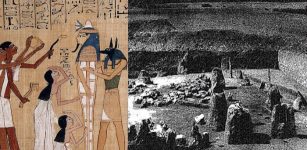 Secrets About ‘Tennessee’s Ancient Egyptian Temple’ Revealed
Civilizations | Aug 15, 2018
Secrets About ‘Tennessee’s Ancient Egyptian Temple’ Revealed
Civilizations | Aug 15, 2018 -
 DNA Reveals – One Of Sunken Warship Vasa’s Crewmen Was A Woman
Archaeology | Apr 4, 2023
DNA Reveals – One Of Sunken Warship Vasa’s Crewmen Was A Woman
Archaeology | Apr 4, 2023 -
 Rare Kakatiya Dynasty Sculptures Discovered Near A Temple In Telangana, India
Archaeology | Jul 24, 2021
Rare Kakatiya Dynasty Sculptures Discovered Near A Temple In Telangana, India
Archaeology | Jul 24, 2021
